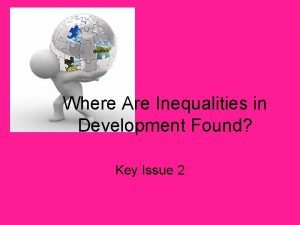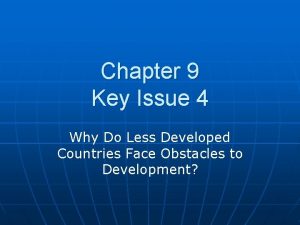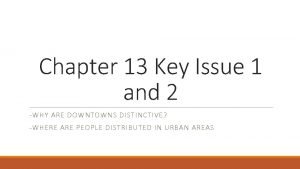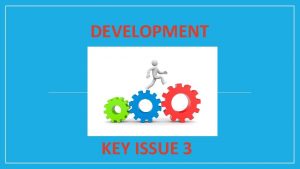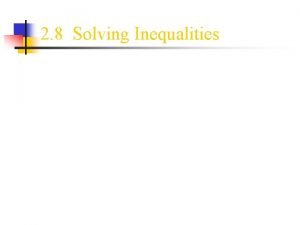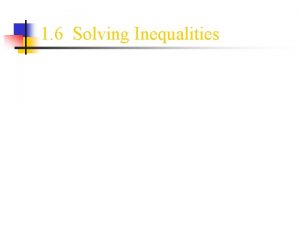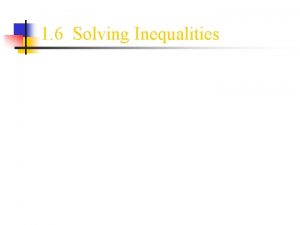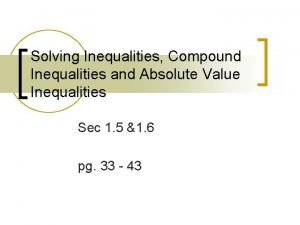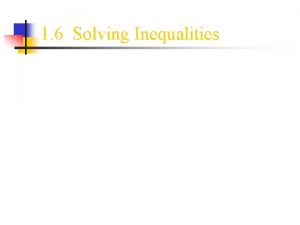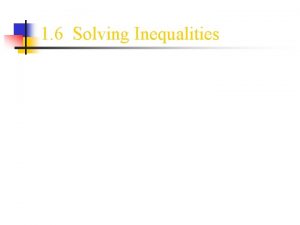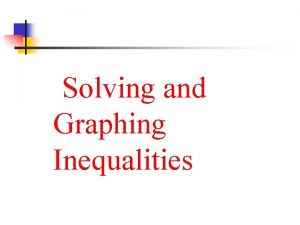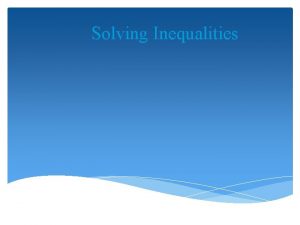Where Are Inequalities in Development Found Key Issue















- Slides: 15

Where Are Inequalities in Development Found? Key Issue 2

Unequal and Uneven Development • Inequality-adjusted Human Development Index: IHDI – Modifies the HDI to account for inequality within a country. – If the IHDI is lower than the HDI the country has inequality. They greater the difference the greater the inequality.

I Gender Measurements A. The UN has come up with two ways to measure gender inequality 1. Gender-Related Development Index (GDI) compares the level of development of women with that of both sexes 2. Gender Inequality Index (GII) measures the gender gap n the level of achievement in three dimensions: 1. Reproductive health 2. Empowerment 3. Labor Market

II Gender Related Development Index A. Compares similar factors as HDI: income, education and life expectancy B. Penalizes a country for having a large disparity between the well-being of men and women. A. Ex: Education in Mexico and Iran C. Scored out of 1. 0. No country has achieved that. A. The average is developed regions in. 975 and developing is. 904


Gender Inequality Index A. Measures the gender gap in the level of achievement in reproductive health, empowerment, and the labor market. B. Similar methodology to the IHDI, the higher the GII the more inequality between men and women. C. Since the 1990 s gender inequality has gone down in all but 4 out of the 138 countries we have data for.


Gender Empowerment and Employment A. Empowerment: the ability of women to achieve improvements in their own status. To achieve political and economic power. B. Measured by the seats women hold in the national legislature and the percentage of women who have completed secondary school.

Empowerment National Legislature Secondary School • In every country in the world women have less political power than men. • Worldwide, 54% of women compared to %64 of men completed some secondary school. – US: 20 out of 100 senators – Us: 84 out of 435 representatives. (2015)



Employment • The female labor force participate rate is the % of women holding full-time jobs outside the home. – Worldwide 51% women, 77% men


Reproductive Health • The reproductive health dimension of the GII is based on 2 indicators: – Maternal mortality rate: number of women who die giving birth per 100, 000 births • 16 deaths in developed countries • 171 in developing countries – Adolescent fertility rate: the number of births per 1000 women ages 15 -19 • 19 per 1000 in developed • 53 per 1000 in developing countries

Reproductive Health • Why is it included? – Because in countries were effective control of reproduction is universal, women have fewer children, and maternal and child health are improved.
 Key issue 2 where are inequalities in development found
Key issue 2 where are inequalities in development found Antigentest åre
Antigentest åre Key issue 4 why do countries face obstacles to development
Key issue 4 why do countries face obstacles to development Key partners
Key partners Business model canvas tripadvisor
Business model canvas tripadvisor Key issue 2: why are situation and site factors important?
Key issue 2: why are situation and site factors important? Key issue 1: why do services cluster downtown?
Key issue 1: why do services cluster downtown? Chapter 13 key issue 1
Chapter 13 key issue 1 Key issue 1 why are downtowns distinctive
Key issue 1 why are downtowns distinctive Key issue 1: where are services distributed?
Key issue 1: where are services distributed? Chapter 12 key issue 4
Chapter 12 key issue 4 Chapter 11 key issue 4
Chapter 11 key issue 4 Key issue 1: where did agriculture originate?
Key issue 1: where did agriculture originate? Language
Language Chapter 5 key issue 4
Chapter 5 key issue 4 Key issue 3 why do individual languages vary among places
Key issue 3 why do individual languages vary among places
